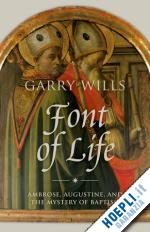One of the most important religious sites in the world is largely hidden and rarely visited. It lies under the piazza in front of Milan's cathedral, and was uncovered by archaeologists only after World War II. It is part of the foundations of a fourth century cathedral from the time of Bishop Ambrose, the most powerful figure in the Christian West during Late Antiquity. To reach it, one must go inside the huge later cathedral and find a stairway by its western wall. After descending narrow stairs one reaches an eight-sided pool (piscine) that was used for total-immersion baptisms by Ambrose. There at dawn on Easter of 387, a cluster of people seeking baptism had gathered after an all-night vigil. Among those seeking baptism was Augustine, an African who had served as the imperial orator at the Milan court of the Emperor. Augustine would go back to his native Africa to become the bishop of Hippo and the most influential writer of the Christian West during the whole later course of the Middle Ages. Alongside him stood his son, his mother, his brother, and two of his pupils and academic colleagues. Nothing less than the future of the Western church was being formed in this cluster of talent and devotion. Font of Life tells the story of this crucial event in the history of the Church. Beginning with the archaeology of Ambrose's Milan and the discovery of the baptistery, Garry Wills tells the story of the at times prickly relationship between Ambrose and Augustine and its importance for the future history of the Church, illuminating the scene of the baptism itself, along with the sources of its ritual, and introducing us to the company of the relatives and friends who greeted Augustine as he emerged from the pool. Appropriately, the book ends with a reflection on the later relationship between Augustine and Ambrose and the influence of the latter upon Augustine's later thought - which has been so seminal in the development of Christian thought ever since.











